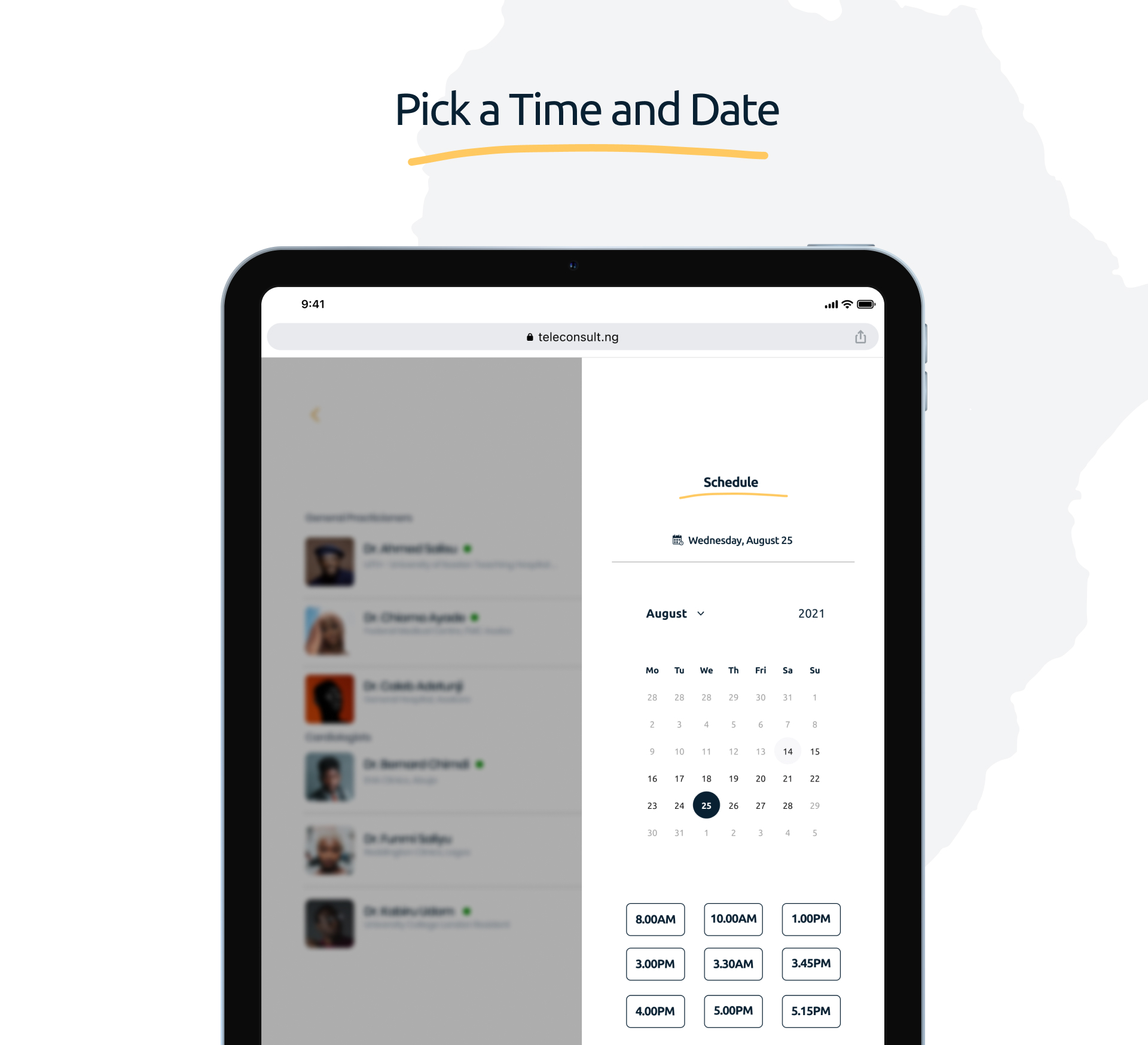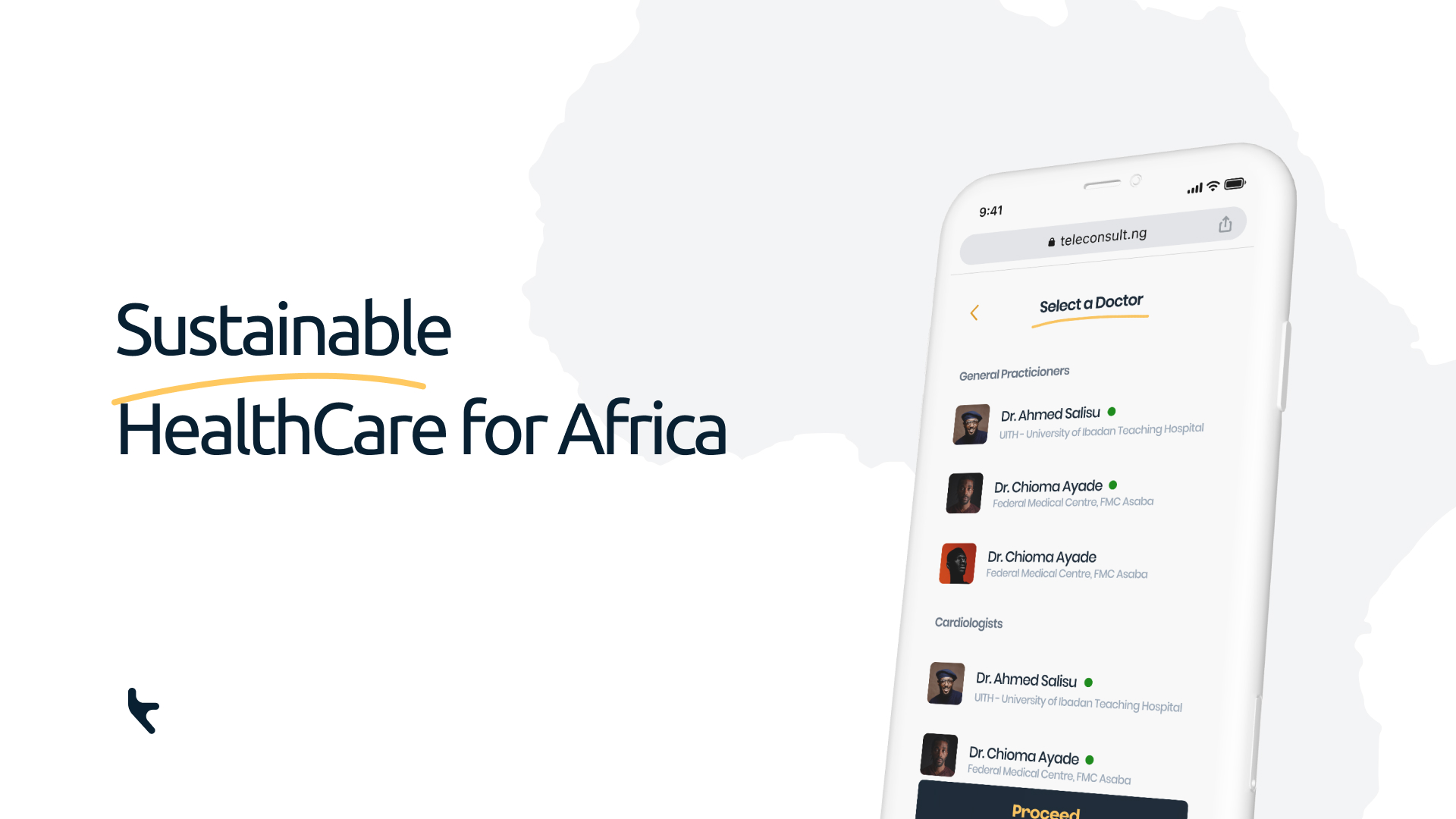Sometime in 2021, I was contracted by a friend reached to help build Teleconsult. He sent me details on the research he had done, and we immediately began to brainstorm with sketches and wireframes.
Why Telemedicine Fails in developing countries
We had figured that most solutions in the telemedicine space were useless in developing countries as most of them assumed that the underlying infrastructure is available which isn't the case.
With that in mind, we set out to tackle these challenges and look at a more realistic solution.
Only 26% of Africans connected to the Internet on their phones
Quick Stats
According to GSMA When it comes to mobile Internet usage, 272 million Africans are now connected to the Internet on their phones, which is just 26% of the population
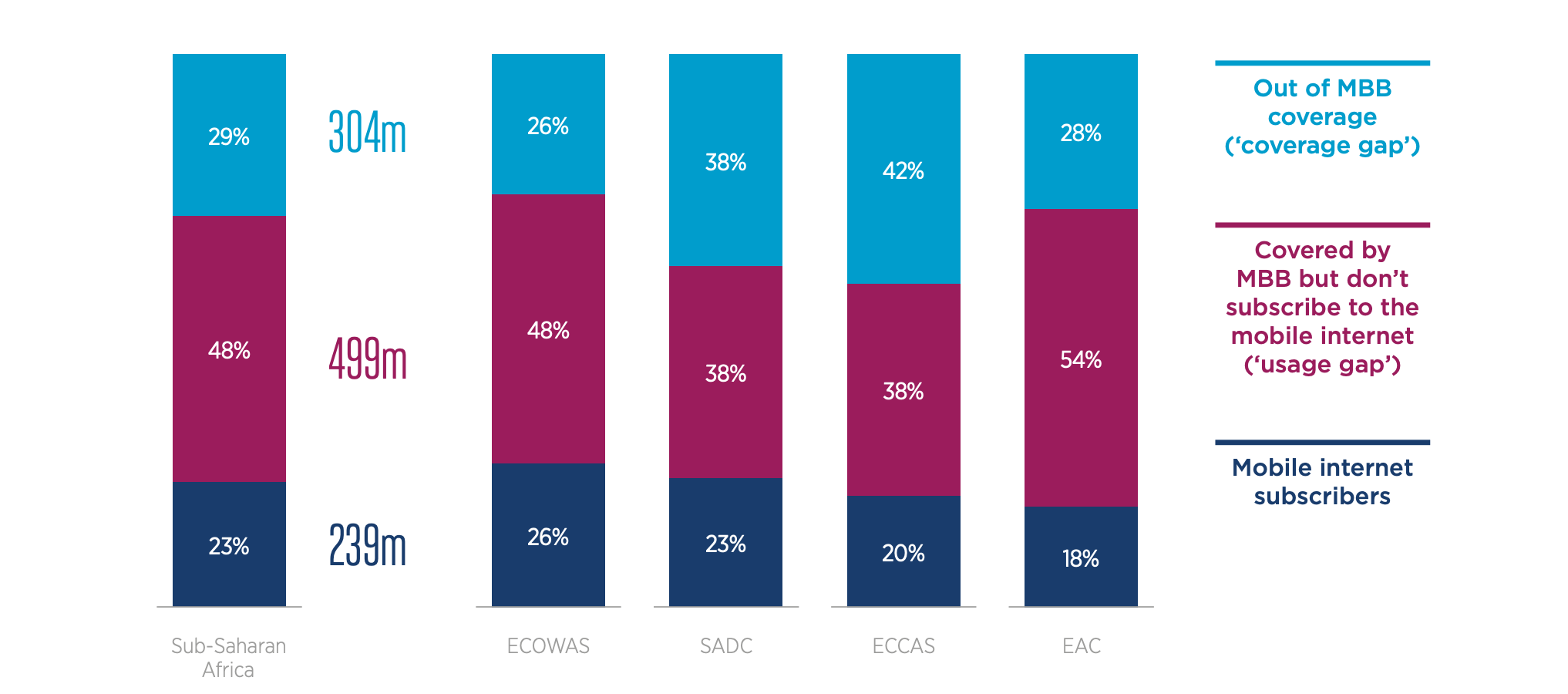
We realised this was a major challenge. Most existing solutions ignored the internet penetration within the given demography.
So we came up TeleKiosks which were small kiosks that consisted of a primary healthcare provider( e.g nurses), stable satellite internet, a Tablet device, and a mini off-grid power system.
Userflows
With that in mind, we began sketching out the intended user flow of which we had three user segments;
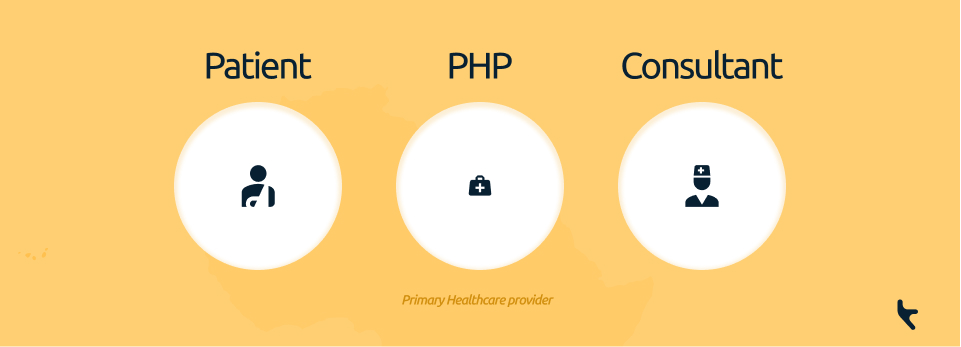
The first segment being Patients (Direct) who have access to power and access to the internet,
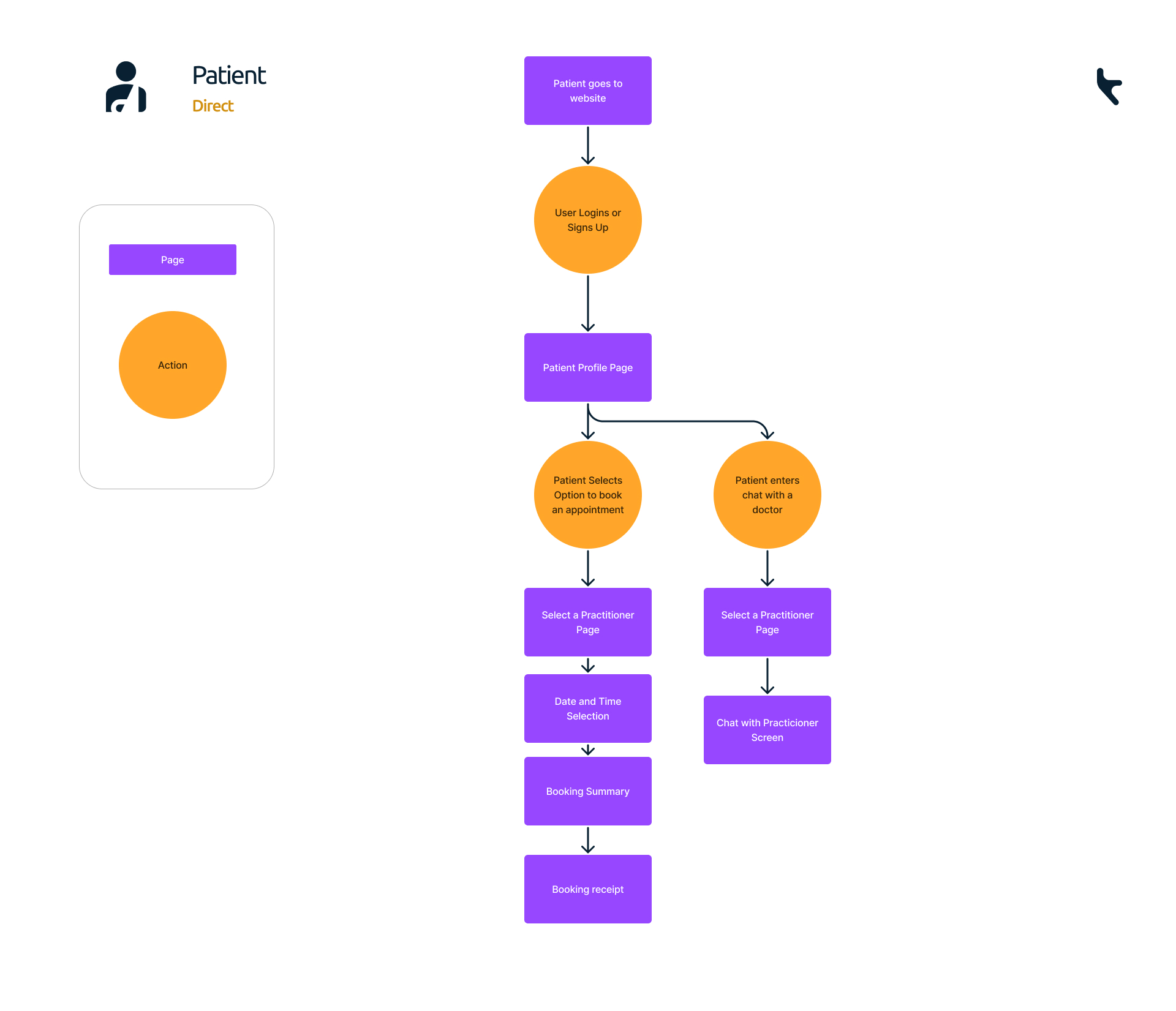
The second segment and the major category, being Patients who may not have access to the internet or aren't tech savvy, their journey starts as they visit the closest TC Kiosk in which a Primary Healthcare Provider attends to them
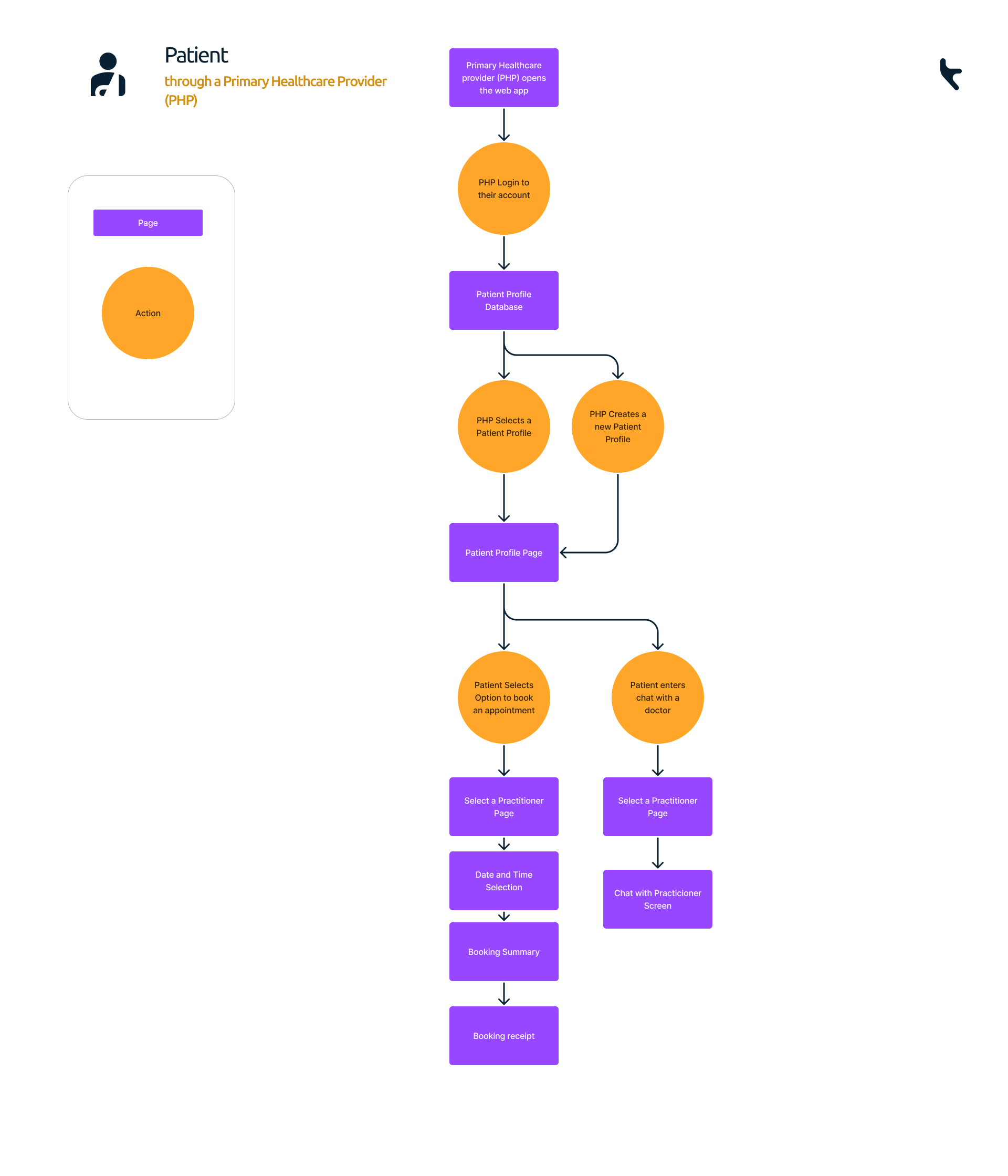
The third segment being for the Consultant which is usually a Medical Doctor
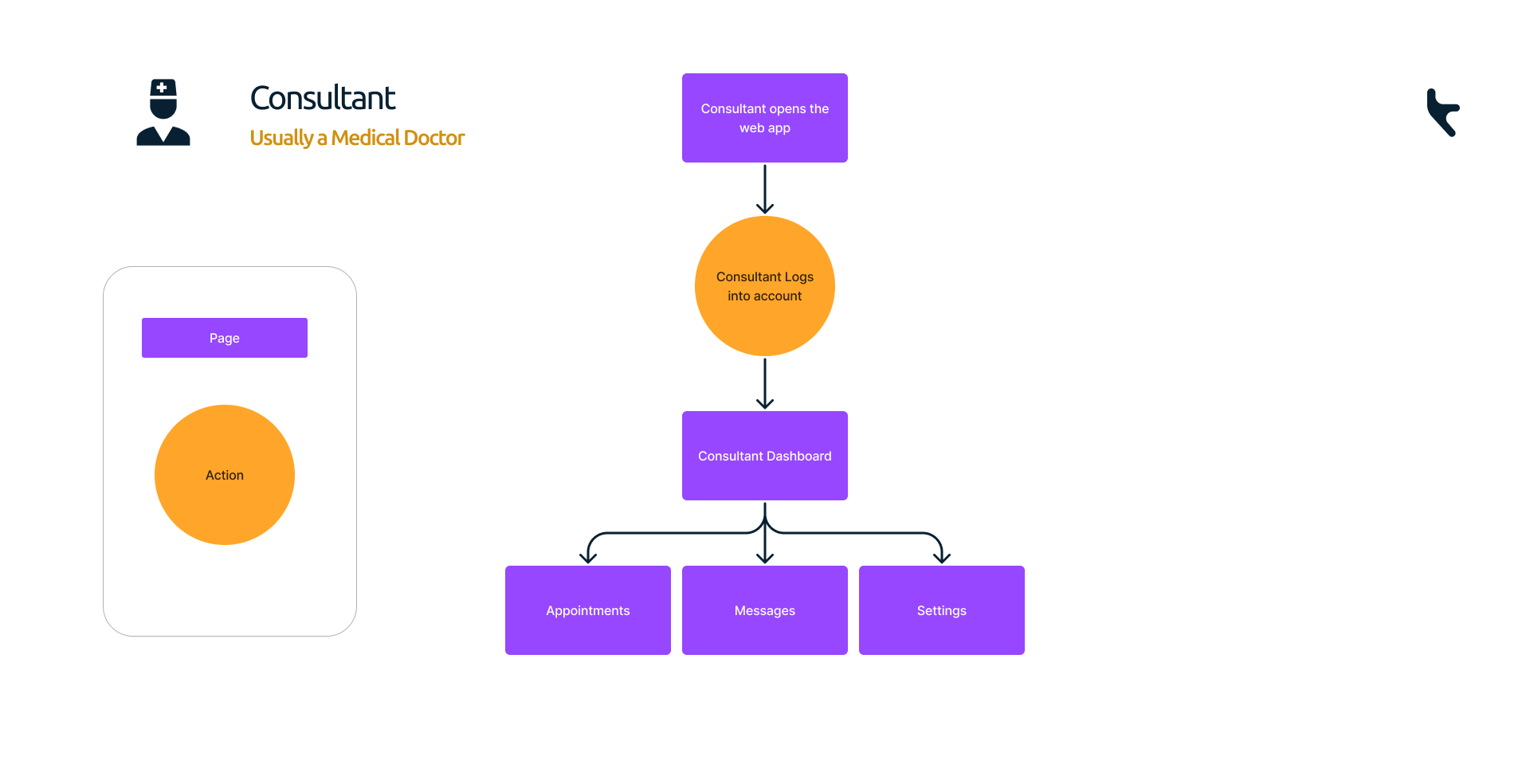
Wireflows
Based off the intended flows we had, I began designing the Low Fidelity wireframes
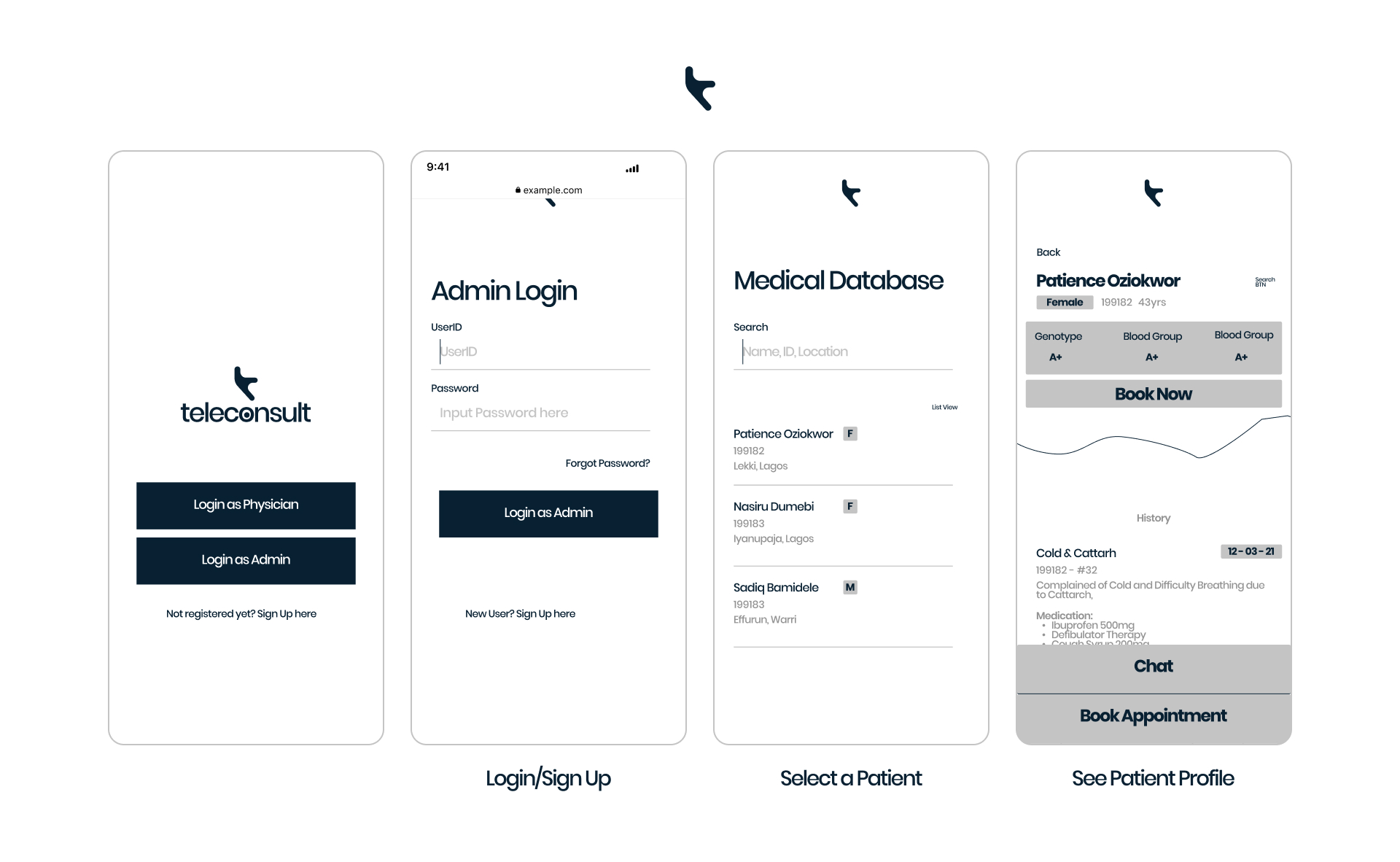
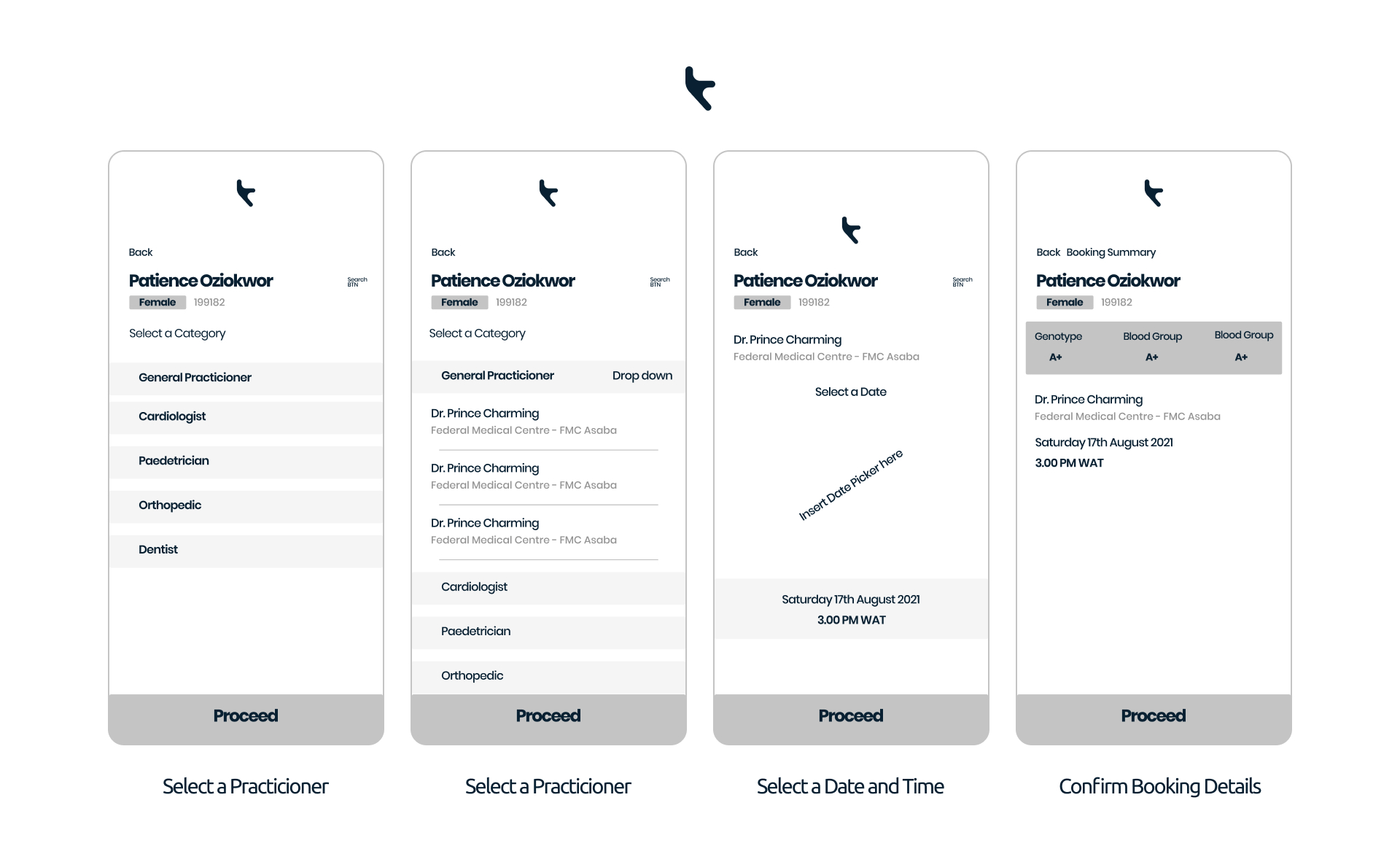
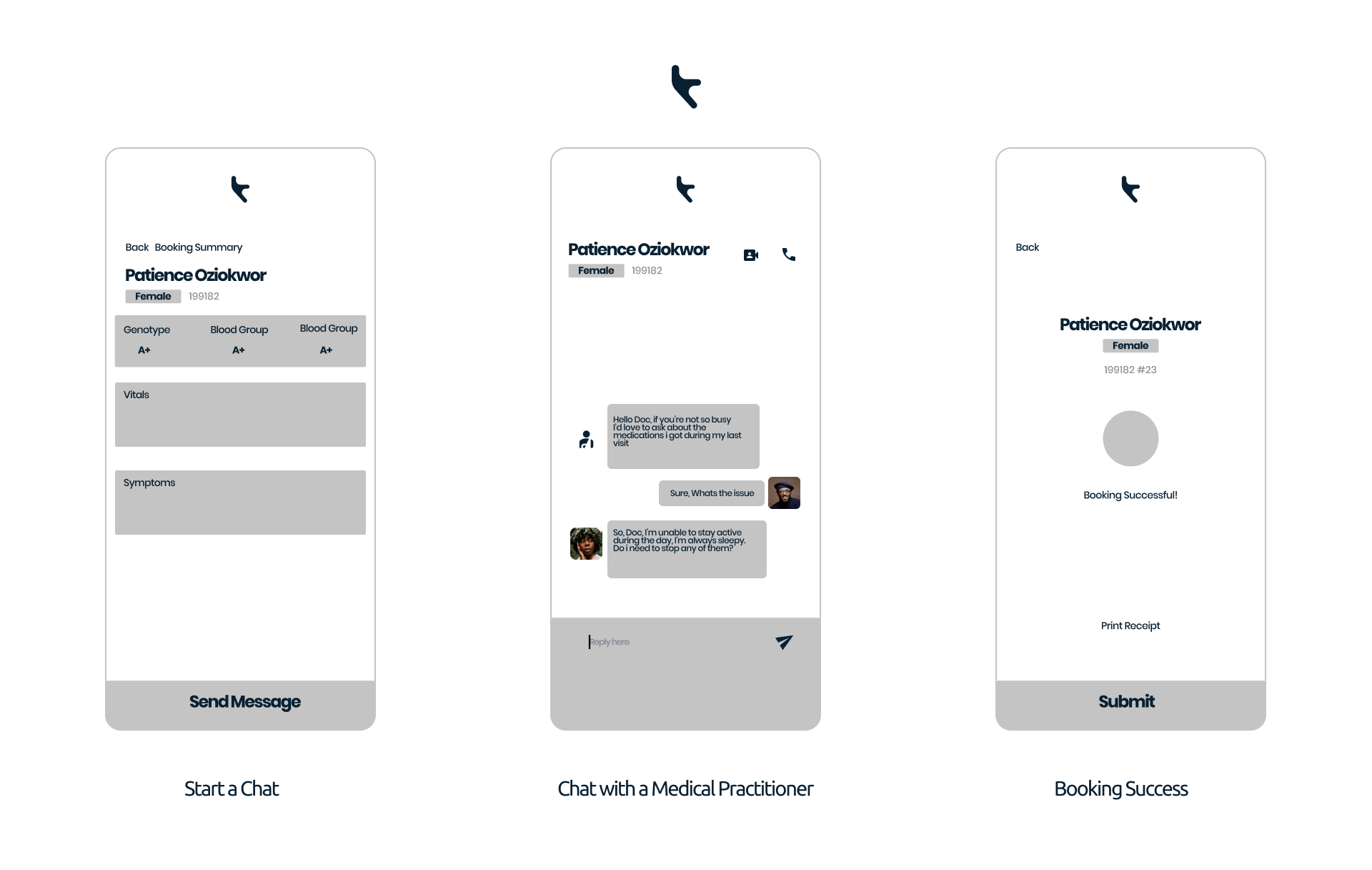
High-Fidelity Designs


